Category Archives: Holocaust
Behind the Star
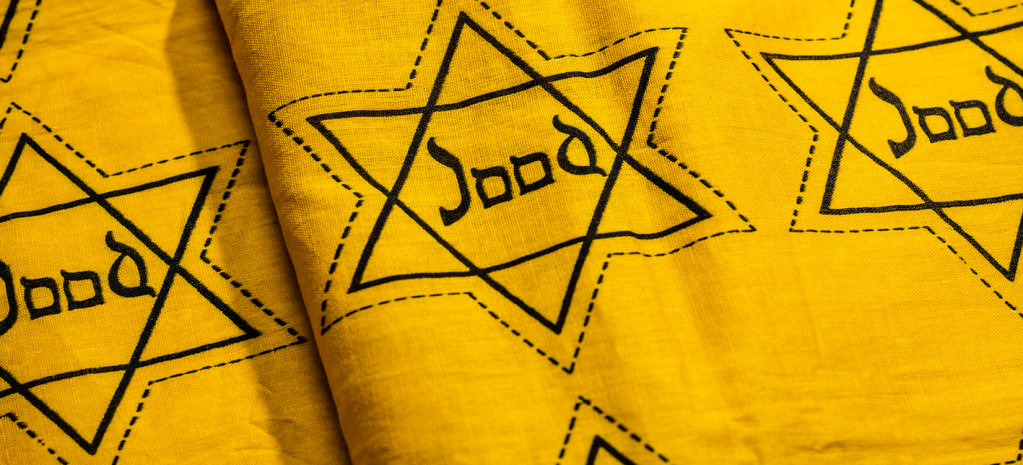
From the 3rd of May 1942, the Nazis made it mandatory to wear a yellow cloth star, called the “Star of David,” in the Netherlands. This measure made it easy to identify Jewish people and was intended to stigmatize and dehumanize them.
These stars were printed on inexpensive yellow cotton, in De Nijverheid, a textile factory, in the Dutch city of Enschede that had previously belonged to a Jewish family. The company had been confiscated from them shortly before and placed under German supervision. The around 100,000 yellow stars needed in the Netherlands were probably printed on the material pictured above, a 10,000-meter roll. Production most likely took no more than a day. The sale of these stars went for 4 cents each. It was a very profitable business. In addition to the purchase price, Jews had to turn in a textile ration coupon.

Behind the stars were human beings just like you and me.
Human beings from different ages, sizes, sexes, and backgrounds.
Behind the stars—were human beings who needed food and water to live, just like any other human being.
Human beings who needed oxygen.
Behind the stars were dentists, teachers, doctors, nurses, and postmen—all helping everyone, regardless, in society.
Human beings who contributed in talents and services.
Behind the stars were students.
Young human beings who had not developed fully yet, just like any other students.
None of these people, who were singled out and often murdered, were ever a threat to society. The real threat to society was those who betrayed, arrested, and murdered them.
We should never think that anyone is more or less than us. We are all the same—our differences make us who we are, and allow us to build our strength.

Alas, this lesson is yet to be learned.
Just remember—next time it could be you behind a star or any other symbol.
Sources

Donation
I am passionate about my site and I know you all like reading my blogs. I have been doing this at no cost and will continue to do so. All I ask is for a voluntary donation of $2, however if you are not in a position to do so I can fully understand, maybe next time then. Thank you. To donate click on the credit/debit card icon of the card you will use. If you want to donate more then $2 just add a higher number in the box left from the PayPal link. Many thanks.
$2.00
The Evil of Colonne Henneicke
Transport 70 from the Drancy Transit Camp, France to Auschwitz-Birkenau
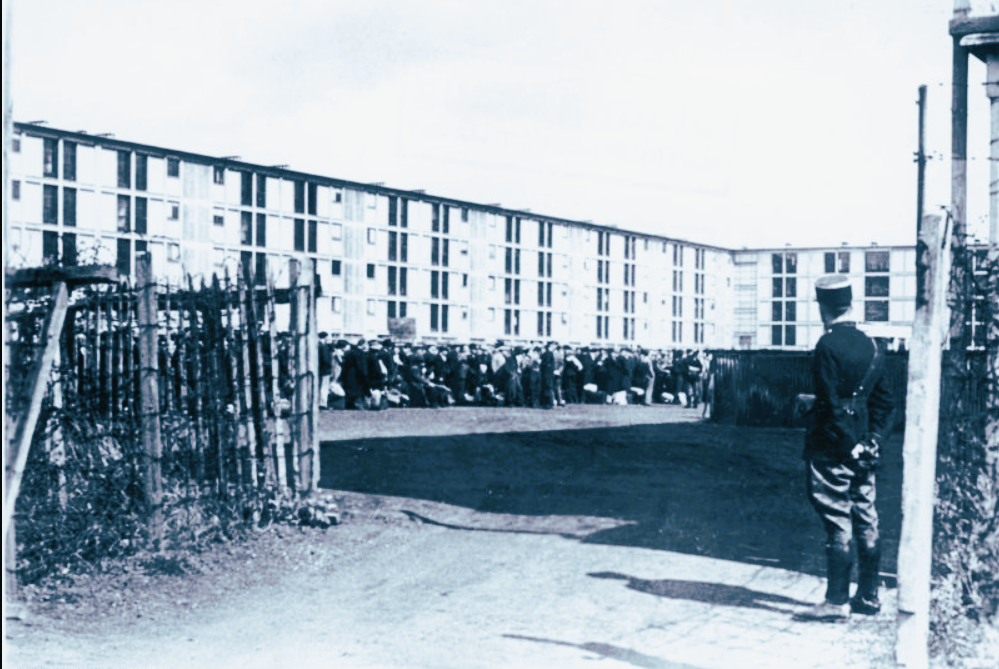
Before I go into the main story, I’d like you to look at the photograph above. Drancy Transit Camp was an assembly and detention camp for confining Jews for deportation to extermination camps during the World War II German occupation of France. However, as you can see, there is only one uniformed person in the photo—a French police officer. It is a point I have made many times before, and I will make it again. Without the help of people in the occupied countries, the Nazis would not have been able to carry out the murders on such a large scale/ Many of the non-Germans were happy to participate in the murder and persecution of Jews, Roma, LGBT, disabled, etc.
On March 27, 1944, a transport left Drancy with the end destination Auschwitz Birkenau—the route of that transport.
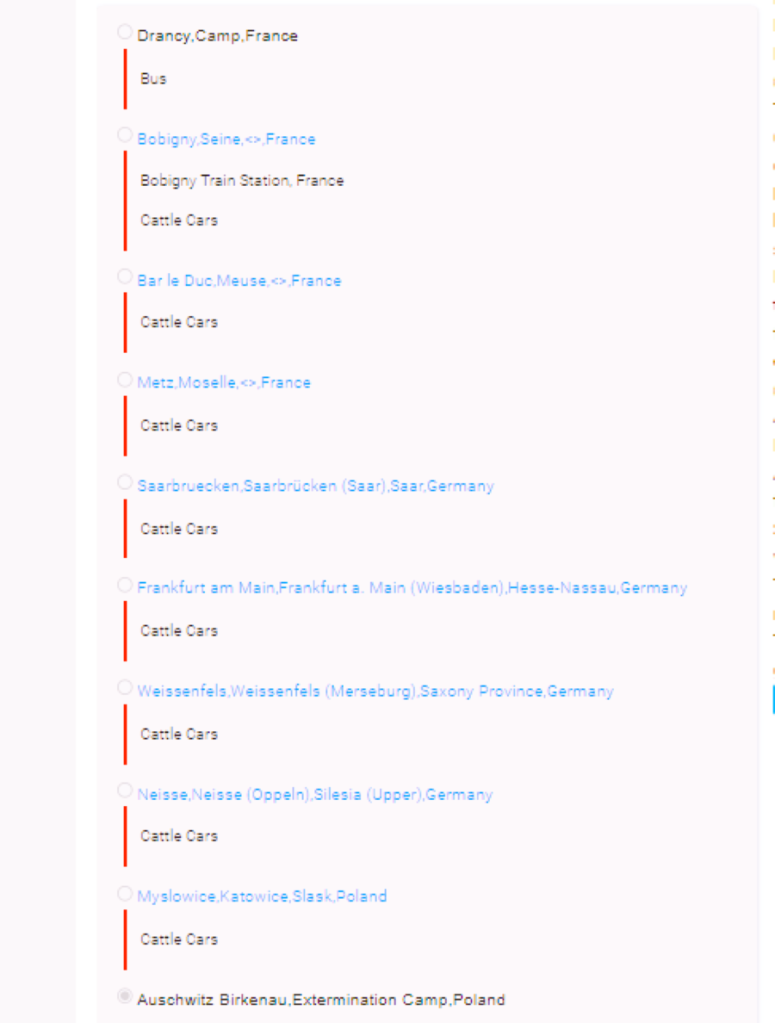
Before reaching Auschwitz-Birkenau, the train passed eight or so stations. I don’t know if the train stopped at any of them. However, I presume it may have stopped at some of the stations. Rarely mentioned—every time that train stopped, the people inside had thoughts of fear or joy. Fear for the unknown, the uncertainty of what was about to happen. Joy because they may have thought they would get off the train, and perhaps the ordeal may be over. The psychological terror of that journey, and all the other journeys, is often forgotten.
There were two rail companies involved with Transport 70. Unsurprisingly, the German Reich railways, Deutsche Reichbahn. The other is the SNCF. The French National Railway Company, SNCF, Société Nationale des chemins de fer français. SNCF was formed in 1938, following the nationalization of France’s five main railway companies.
The French state-owned trains and state-paid rail workers were responsible for carrying approximately 76,000 Jews from France to Germany and the East during World War II. Only a handful returned.
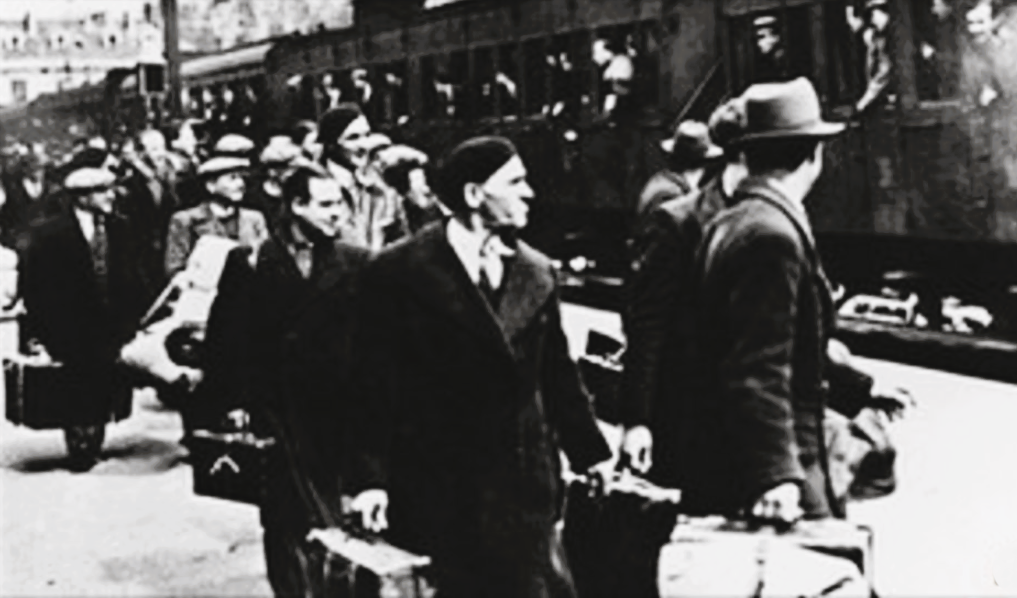
According to the list prepared in the Drancy Transit Camp before the departure, there were 1,000 Jews on Transport 70. A copy of the list was sent to the Union of French Jews (Union générale des israélites de France [UGIF]), recovered by the Contemporary Jewish Documentation Centre (Centre de Documentation Juive Contemporaine [CDJC]) after the war, and edited by Serge Klarsfeld in his 1978 work, Mémorial de la déportation des Juifs de France. However, Klarsfeld’s Le Calendrier de la persécution des Juifs de France records a total of 1,025 deportees (609 men and 416 women). Klarsfeld also notes that the Jews deported on this transport were arrested during roundups in the Paris region—the Isère, the Savoie, the Lyon region, Vichy, Toulouse, Marseille, and Côte d’Azur.
I won’t be able to go into the 1025 stories, but I will use Daniel Tytelman to commemorate all murders.

There is some confusion about Daniel’s age. Yad Vashem has two birth years, 1928 and 1930, but looking at that picture of him, he doesn’t look 14. After research, I found a document that puts his birthdate as April 11, 1928. nearly 40 years before I was born, just off by one day.

Daniel was murdered when he was still 15. There are also two versions of the way he was murdered. He was transported on March 27 from Drancy to Auschwitz. He died, according to one version, shot while trying to escape while the train was slowing down at Bar-le-Duc. According to another, he was gassed upon his arrival on April 1.
Only 15% of all those deported that day survived the Holocaust.
Sources
https://www.deportesdelyon.fr/les-archives-par-famille-n-z/enfants-tytelman
https://collections.yadvashem.org/en/deportations/5092642
https://www.bbc.com/news/world-europe-11751246

Donation
I am passionate about my site and I know you all like reading my blogs. I have been doing this at no cost and will continue to do so. All I ask is for a voluntary donation of $2, however if you are not in a position to do so I can fully understand, maybe next time then. Thank you. To donate click on the credit/debit card icon of the card you will use. If you want to donate more then $2 just add a higher number in the box left from the PayPal link. Many thanks.
$2.00
Hanns Albin Rauter—Pure Evil

It is important how you report on history. No one expects things to be always 100% accurate, but facts that can easily be verified should always be correct. In the case of Hanns Albin Rauter, I have seen him described as the Dutch head of Police during World War II, this is not true, he wasn’t Dutch, but Austrian. On Wikipedia I had seen the date of his execution as March 24, 1949, this is also incorrect, the date is a day later March 25, 1949.
He was the highest SS and Police Leader in the Netherlands during the period of 1940-1945. He was responsible for the repression of the Dutch resistance and supervised the deportation of the Dutch Jews to the concentration and death camps. Some sites refer to the occupied Netherlands, I don’t like that term, because that is giving an excuse to many of the Dutch who also played a part in governing the country as part of the Nazi regime.
On March 29, 1943, an order issued by Hanns Albin Rauter was published in most of the Dutch newspapers, “As of 10 April 1943, Jews are forbidden to stay in the provinces of Friesland, Drenthe, Groningen, Overijssel, Gelderland, Limburg, Noord-Brabant, and Zeeland. Jews who are currently in the aforementioned provinces must go to camp Vught.”
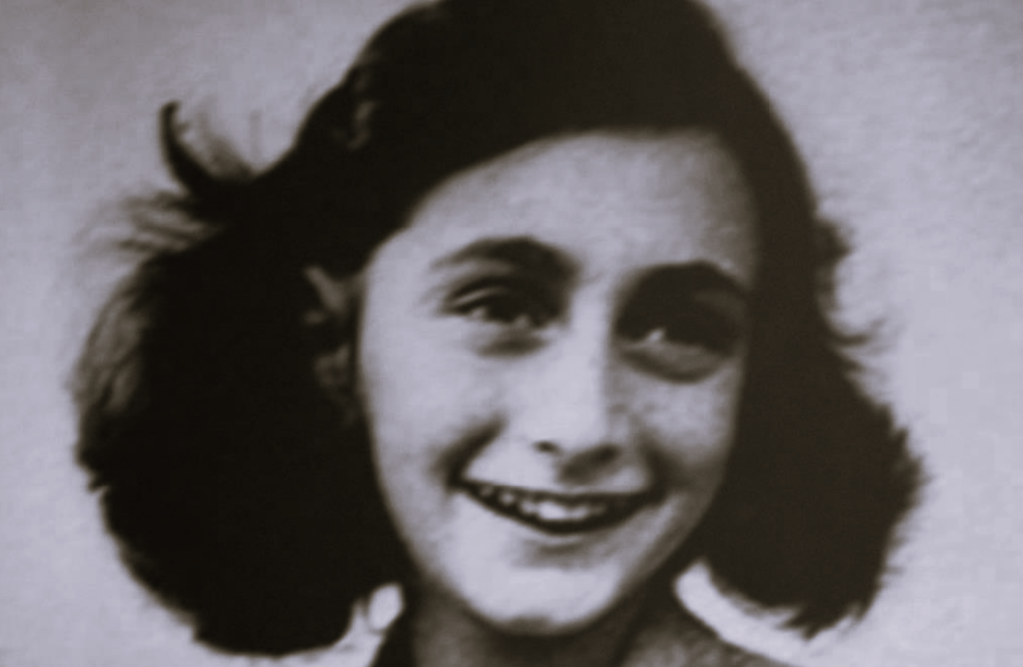
Anne Frank wrote of the news in her diary: ‘Rauter, some German bigwig, recently gave a speech. “All Jews must be out of the German-occupied territories before July 1st. The province of Utrecht will be cleansed of Jews (as if they were cockroaches) between April 1st and May 1st, and the provinces of North and South Holland between May 1st and June 1st. These poor people are being shipped off to filthy slaughterhouses like a herd of sick and neglected cattle. But I’ll say no more on the subject. My own thoughts give me nightmares!”
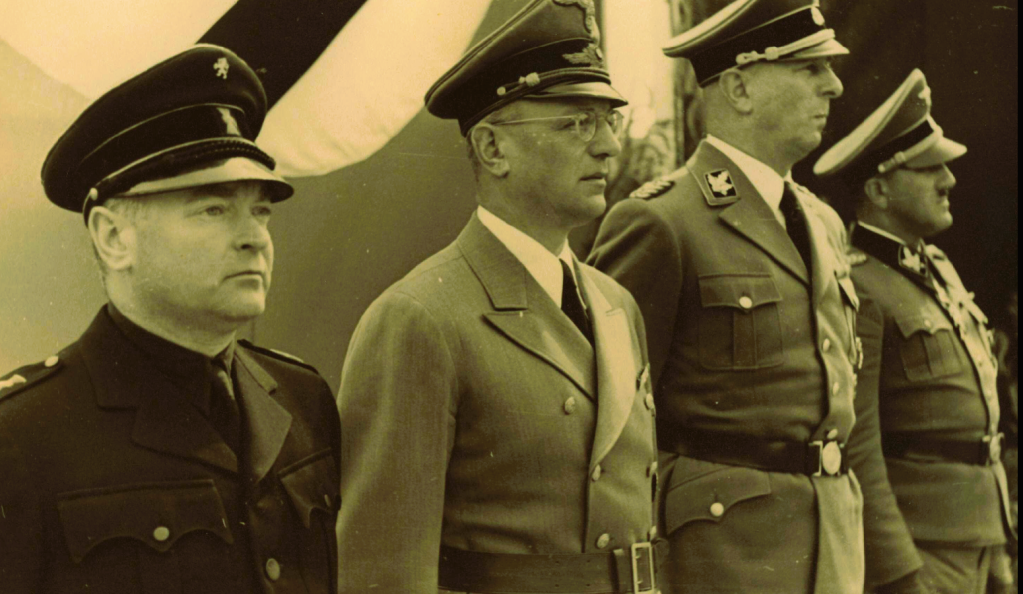
As I said earlier there were many Dutch involved in governing the Netherlands during World War 2. One of them was the leader of the NSB, the Dutch Nazi Union. Anton Mussert. Seen above on the left standing next to Adriaan Anton Hanns Albin Rauter and Arthur Seyss-Inquart,
Rauter was the main instigator of terror through summary arrests and internment in the Netherlands. The SS set up a concentration camp named Herzogenbusch after the city of ‘s-Hertogenbosch but located in the neighboring town of Vught gave the camp its name—Kamp Vught. In total this camp detained 31,000 people, of whom about 735 were killed.
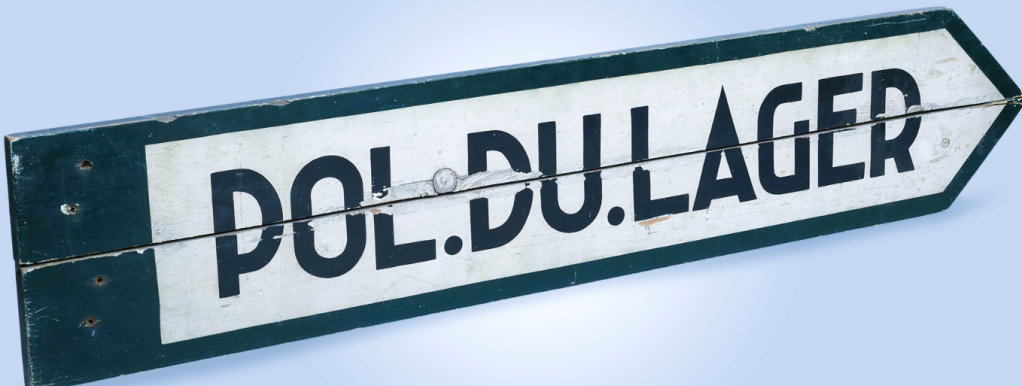
Also, his SS manned a so-called polizeiliches Durchgangslager or police transit camp near Amersfoort, known as Kamp Amersfoort, in fact, a concentration camp, where approximately 35,000 people were detained and maltreated and 650 people (Dutch and Russian) died.
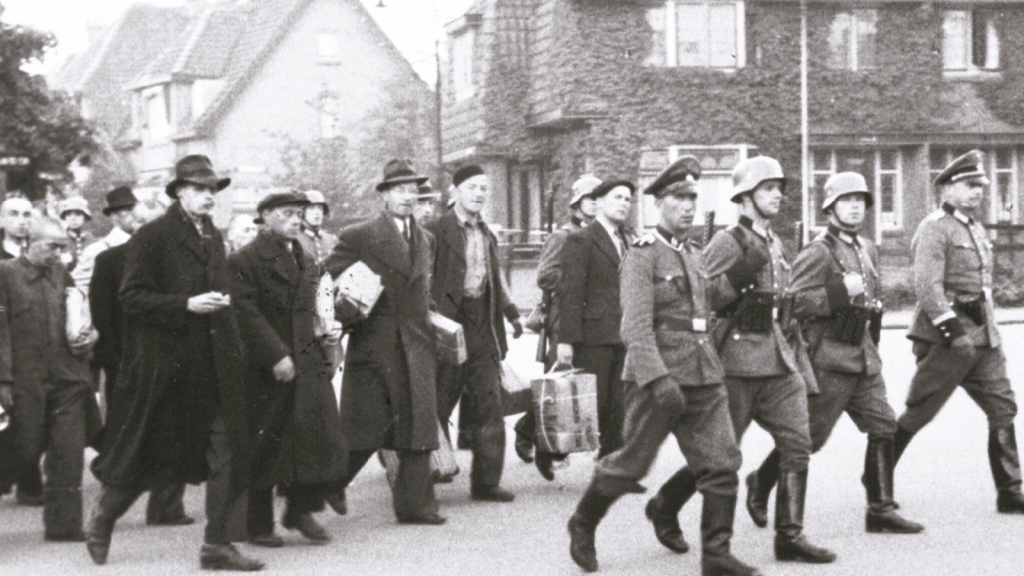
Rauter’s SS also managed the Kamp Westerbork (Polizeiliches Durchgangslager Westerbork), the place from which 110,000 plus Dutch Jews were deported to Nazi concentration and extermination camps, mainly Auschwitz and Sobibor.
75% of all Dutch Jews and Jews living in the Netherlands were murdered by the Nazis. Additionally, almost 20,000 Dutch people were arrested because of their work with the resistance, of which, two thousand resistance fighters were executed. Others were sent to detention centers or to concentration camps. Hanns Albin Rauter was one of the main architects.
On the night of 6 March 1945, Rauter was severely injured in a resistance attack. A day later, the Germans executed 263 political prisoners in retaliation. When the war ended, Rauter was still recovering in a German hospital, where he was arrested by the British. Rauter was handed over to the Dutch government by the British, in 1948, and was tried by a special court in The Hague. Rauter was sentenced to death on May 4th, 1948. He appealed to the Court of Cassation on May 12, 1948. The case was tried for the Bijzondere Raad van Cassatie (‘special court of cassation’) on October 20th and 22nd, 1948 in the building of the Hoge Raad (‘supreme court’) of the Netherlands. The death sentence was confirmed on January 12, 1949. He was executed on March 25, 1949.

Rauter, like several other high-ranking Nazis, had a scar on his cheek. This was not caused by the war but was as a result of dueling. These so-called dueling scars (or “Schmisse” in German) have been seen as a badge of honor since as early as 1825. Alternatively referred to as “Mensur scars,” “smite,” “Schimitte,” or “Renommierschmiss,” they became popular among upper-class Austrians and Germans involved in academic fencing at the start of the 20th century. Consequently, many of these same upper-class men who fashioned them found themselves wearing German army uniforms in both World War I and II. German military laws permitted men to wage duels of honor until World War I. During the Third Reich, the Mensur was prohibited at all universities following the party line.

Donation
I am passionate about my site and I know you all like reading my blogs. I have been doing this at no cost and will continue to do so. All I ask is for a voluntary donation of $2, however if you are not in a position to do so I can fully understand, maybe next time then. Thank you. To donate click on the credit/debit card icon of the card you will use. If you want to donate more then $2 just add a higher number in the box left from the PayPal link. Many thanks.
$2.00
Sources
https://discover.hubpages.com/education/Dueling-Scars-The-Nazi-Officer-Badge-of-Honor
https://www.oorlogsbronnen.nl/tijdlijn/Hanns-Albin-Rauter/03/0004
https://www.annefrank.org/en/timeline/162/rauter-wants-to-run-all-jews-from-the-provinces
Destructed Lives

In the summer of 1942, several Jewish families from Winterswijk, the Netherlands, decided to hide in the Korenburgerveen nature reserve. With the help of farmers, barracks were built in the peat, and local residents provided water and food. A total of 23 people found refuge in the bog, including five children. On November 27, 1942, the bog’s supervisor and two of his superiors from Natuurmonumenten discovered the hiding place. Later that day, the Winterswijk police and military police took action. The group was held overnight in the Feestgebouw and taken to Westerbork by the SD the next day. Some escaped during the action, but only three people survived the war. The rest died in concentration camps, the youngest victim was nine months old. The only exception was Philip Schwarz, he was taken off the train in Kosel to go to A work camp. A letter from him that he wrote from the camp has been preserved. Philip did not know the fate of his wife and children. Philip also did not survive the camp. The sad thing about this story is it was a group arrested by the Dutch.
His Daughter:
Mathilde Rosette Schwarz, born in Winterswijk on 24 March 1934. She was murdered at Auschwitz on 11 December 1942 at the age of 8.
His Son:
Robert Louis Schwarz was born in Winterswijk on 25 June 1938. He was murdered at Auschwitz on 11 December 1942. He was 4 years old.

His wife:
Madelene Henriette Schwarz-Meijers wasborn in Arnhem on 25 October 1905. She was murdered at Auschwitz on 11 December 1942. She was 37.
Philip Schwarz was born in Winterswijk on 9 October 1905. He was murdered somewhere in middle Europe on 21 January 1945, although there is another date on a 1951-issued document. He reached the age of 42 years.


This was just a family—going about their daily lives, harming no one, and contributing to society—murdered.
Sources
https://digitalcollections.its-arolsen.org/050301/place/pageview/308259/307556
https://www.joodsmonument.nl/en/page/33827/philip-schwarz
https://oorlogsgravenstichting.nl/personen/138678/mathilde-rosette-schwarz
Purim During the Darkest of Days

Before I started with the main story. I will first try to explain to the non-Jewish readers, which includes me, what Purim is.
The jolly Jewish holiday of Purim is celebrated every year on the 14th of the Hebrew month of Adar (late winter/early spring). Purim began in 2024 on Saturday night, March 23, and continues through Sunday, March 24. Among the celebrations: many Jewish children will dress up and feast on triangular sweets (called hamantaschen) on Saturday evening. It is one of the most joyous and fun Jewish holidays on the calendar. It commemorates a time when the Jewish people living in Persia were saved from extermination. It commemorates the saving of the Jewish people from annihilation at the hands of an official of the Achaemenid Empire named Haman, as it is recounted in the Book of Esther.

I will have links at the end of the blog for anyone interested in finding out more about Purim. However, as the title suggests this blog is about Purim during the Holocaust. The best way to do this is via the words of someone who lived through it.
Pinchas Menachem Feivlovitz wrote a story titled Purim in Nazi Hell±—
“‘Tired, starved, and downtrodden, we Jewish prisoners plodded into the barracks where we spent a few miserable hours on hard bunks before another day of backbreaking labor. We were too exhausted to think, but when our minds wandered back to times long gone, we could not help but wonder if it had all been a dream. Would we ever live again as we once had, before our parents and children had been murdered, and we were dropped into an unending hellish existence where death seemed to be a welcome (and inevitable) reprieve?
It was Purim Eve, but what was there for us to celebrate in the German concentration camp of Gross-Rosen?

Suddenly, one of us leaped down from his small space on the bunk and began an impassioned speech that will forever remain in my memory.
“My fellow Jews,” he called out, “dear brothers in suffering! Today is our Purim, when we remember the miracles G‑d did for our ancestors. He who dwells in Heaven saved our nation from being decimated. The enemy fell into the pit that he himself had dug. Today we once again have a double-edged sword pressed against our necks. Our enemies are trying to destroy us, but do not allow terror into your hearts! The Haman of our day, Hitler and his lackeys, will not be able to overcome G‑d’s chosen nation. The eternity of Israel will not lie. The bells of freedom are already ringing in the distance. We will yet live to see justice meted out against our enemies, just like our ancestors in Shushan of old. Be strong, brothers, the Jewish nation lives on!”
Beads of sweat appeared on his face. His lips trembled, his eyes glinted, but he said no more.
Then another prisoner jumped down from his bunk and—took his place next to the orator. Sweetly, with a voice laden with nostalgia and hope, he sang the words of the blessing said after the Megillah reading, in which we thank G‑d “Who fights our battles and pays comeuppance to our mortal enemies.”
As the rest of us absorbed the last echoes of the tune, the two men lithely climbed back into their spots on the tiered bunking and silence reigned once again.
In our minds, we were blissfully transported back to the happy Purims of years past, but we knew the joy would not last.
The following morning, the block commander stormed into the barrack: “Cursed Jews!” he shouted. “Last night someone here spoke disparagingly of our Führer. Tell me who it was! If I do not know who it was, you will all be punished before the day is done!”
His words were met with defiant silence.
His face appeared angrier, and his voice became louder. “Dirty Jews!” he called out shrilly. “I am giving you 10 minutes to identify last night’s speakers. Make no mistake about it, your lives are on the line.”
Ten minutes passed, and no one uttered a word.
“Run, swine, run!” the commander barked, and we Jews began to run as fast as we could, while the guards rained down a shower of rifle butts and whips upon our heads and backs.
“Quick, quick,” they shouted as rivers of blood spurted from our heads and our arms. Our backs sagged and our feet ached.
But we had only one fear: that last night’s brave performers, who had gifted us with hope and courage, would give themselves up in order to save us from further suffering. One even tried to run out of line to identify himself, but his neighbors didn’t allow it. “No, no,” they hissed with clenched teeth, “Stay strong. We are all responsible for one another.”
I have no way of recalling how long this went on because every moment felt like an eternity. We ran with our last strength, panting, with no air to breathe. Our tongues hung out, and tears mingled with sweat on our cheeks. But no one even considered ratting on the heroes of the previous night.
Yes, even the prisoners of Gross-Rosen merited their own Purim miracle—two miracles, actually: That no one dropped dead from the diabolic run we were forced to endure, and that we all had the courage to keep the identity of those two men secret.‘”
At the top of the blog is a Purim class portrait photograph of a kindergarten at the Reali Hebrew gymnasium. Kovno, Lithuania, March 5, 1939.
Sources:
https://encyclopedia.ushmm.org/content/en/article/purim
https://www.chabad.org/holidays/purim/article_cdo/aid/4668804/jewish/Purim-in-Nazi-Hell.htm
https://www.chabad.org/holidays/purim/article_cdo/aid/645309/jewish/What-Is-Purim.htm#What
https://www.britannica.com/topic/Purim
https://www.jewishvirtuallibrary.org/purim

Donation
I am passionate about my site and I know you all like reading my blogs. I have been doing this at no cost and will continue to do so. All I ask is for a voluntary donation of $2, however if you are not in a position to do so I can fully understand, maybe next time then. Thank you. To donate click on the credit/debit card icon of the card you will use. If you want to donate more then $2 just add a higher number in the box left from the PayPal link. Many thanks.
$2.00
My Interview with Bryan Mark Rigg—Author and Historian

This is my interview with Bryan Mark Rigg, military historian, and author.
Bryan Mark Rigg is the author of several highly regarded books on World War II history, including Hitler’s Jewish Soldiers: The Untold Story of Nazi Racial Laws and Men of Jewish Descent in the German Military and The Rabbi Saved by Hitler’s Soldiers: Rebbe Joseph Isaac Schneersohn and His Astonishing Rescue.
In addition to his writing, Rigg has also worked as a professor of history at several universities, including American Military University, Southern Methodist University, and the U.S. Military Academy at West Point. He has been a frequent contributor to various media outlets, including CNN, NPR, and The New York Times.
The subject of Jewish soldiers or soldiers of Jewish descent is always a bit of a controversial topic. However, to fully understand the complexity of the Holocaust, all aspects so be told. The Holocaust wasn’t just about good vs evil, victims and perpetrators, it is more complex than that. It never was just a black-and-white subject, there are a whole load of different shades in between. Not to address all aspects would be wrong, even if there are some uncomfortable truths. History should never be denied, ignored, or distorted.
source
Mary Weinrib—Auschwitz Survivor

Mary Weinrib was born on July 16, 1925, in Warsaw, Poland. She was born Mary Mania (Malka) Rubinstein. She grew up in Wierzbnik, a Jewish town that was part of Starachowice, Poland.
Her mother was Rose Rubinstein, a dressmaker. Her father, Gershon Rubinstein, was a butcher. The family, which included a younger sister (Ida) and a younger brother (Harold, lived in Warsaw until Mary was about five years old. They moved to the father’s hometown of Wierzbnik, the Jewish section of the larger industrial city of Starachowice.
On Sept. 1, 1939, German forces invaded Poland, effectively starting the Second World War. At the beginning of 1940, the Jews of German-occupied Starachowice were required to wear a white armband with a blue Star of David. On April 2, 1940, they were put into what became known as the Wierzbnik Ghetto, where they lived under armed guard.
She was eventually sent to a labor camp in Starachowice, where she manufactured ammunition for the Nazis’ war efforts. Later she was sent to Auschwitz, where she met Morris Weinrib, her future husband, whom she reunited with after being liberated from Bergen-Belsen in 1945. The couple eventually moved to Canada
Now I know that most of you will not know who Mary Weinrib is, but this may help you.
Mary Weinrib is the mother of Gary Lee Weinrib, aka Geddy Lee, the frontman of Canadian rock trio Rush.
Sources
https://collections.ushmm.org/search/catalog/irn702003
https://www.timesofisrael.com/rush-rockers-mom-an-auschwitz-survivor-was-his-biggest-fan
You must be logged in to post a comment.